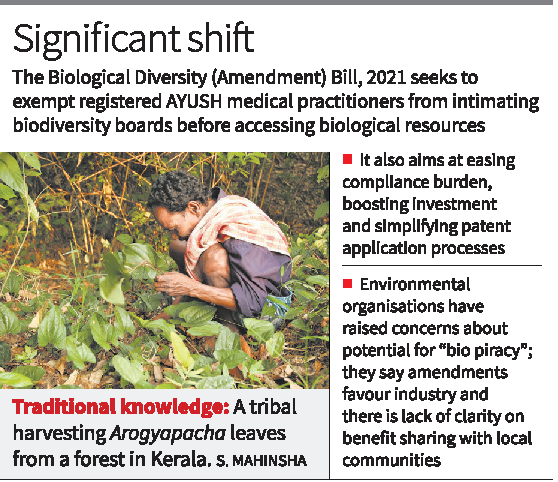Free Courses Sale ends Soon, Get It Now


Free Courses Sale ends Soon, Get It Now



Disclaimer: Copyright infringement not intended.
Context
Details
Objectives of the Bill
Environmental Concerns
Implementation Issues
Biological Diversity Act, 2002
Key Features of the Act
Implementation and Challenges
While the Biological Diversity Act, 2002, is a crucial legal framework for biodiversity conservation, its effective implementation has faced challenges. Some of the key challenges include:
Conclusion
The Biological Diversity (Amendment) Bill, 2021, aims to address concerns related to the existing Act and promote the benefits of medicinal forest products to tribes and vulnerable communities. While the government states that the amendment will encourage Ayurveda and ease of doing business, environmentalists raise concerns about the potential for "bio-piracy" and lack of clarity on benefit-sharing. Striking a balance between promoting traditional knowledge and protecting biodiversity will be crucial for the effective implementation of the amendment.
|
PRACTICE QUESTION Q. Assess the implications of the Biological Diversity (Amendment) Bill, 2021, on the conservation of biodiversity and traditional knowledge. Evaluate the government's rationale behind the amendments and propose strategies to ensure effective implementation while safeguarding the interests of tribes, vulnerable communities, and the environment. (250 Words) |
https://epaper.thehindu.com/ccidist-ws/th/th_delhi/issues/45125/OPS/GR0BHGSOJ.1+GBCBHHQ51.1.html
© 2024 iasgyan. All right reserved